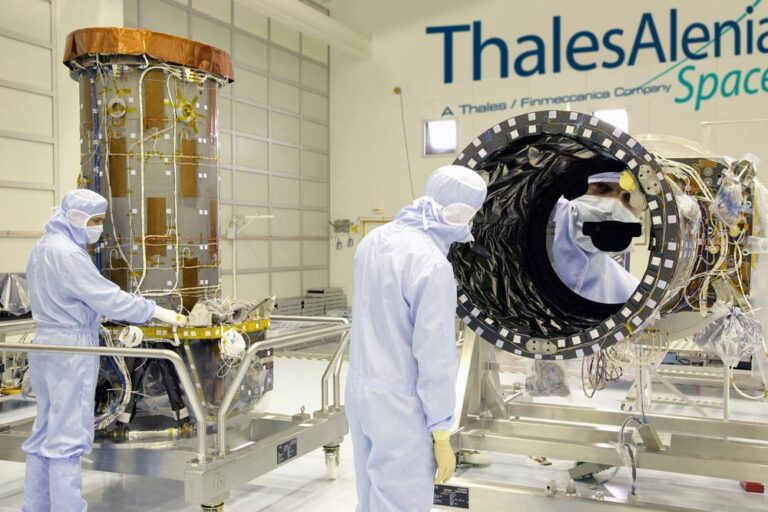Thales Alenia Space and the Italian government have announced a groundbreaking collaboration to develop the first lunar base, marking a significant milestone in space exploration. This ambitious project aims to establish a sustainable human presence on the Moon, leveraging advanced technologies and Italy’s growing expertise in the aerospace sector. The initiative underscores a new era of international cooperation and innovation as nations prepare for long-term lunar missions.
Thales Alenia Space Partners with Italy to Pioneer First Lunar Base
Thales Alenia Space, a leading player in aerospace manufacturing, has teamed up with the Italian government to embark on an ambitious project aimed at establishing humanity’s first permanent lunar base. This endeavor represents a significant milestone in space exploration, combining cutting-edge technology and international collaboration to create a sustainable habitat on the Moon’s surface. By leveraging Italy’s scientific expertise and Thales Alenia Space’s innovative engineering capabilities, the project aims to develop modular living quarters, life-support systems, and advanced communication networks to support long-term missions beyond Earth.
The lunar base initiative will focus on several critical components to ensure durability and efficiency in the harsh lunar environment, including:
- Radiation shielding to protect astronauts from solar and cosmic rays
- Autonomous power systems based on solar energy and advanced batteries
- In-situ resource utilization to harness lunar regolith for construction and oxygen generation
- Robotic assistance for habitat assembly and maintenance
| Project Milestone | Timeline | Lead Partner |
|---|---|---|
| Preliminary Design Phase | 2024-2025 | Thales Alenia Space |
| Technology Testing | 2026-2027 | Italian Space Agency |
| Module Assembly on Earth | 2028 | Thales Alenia Space |
| First Lunar Deployment | 2029-2030 | Joint Operation |
Technical Innovations and Strategic Objectives Behind the Lunar Habitat
At the core of this groundbreaking project are several cutting-edge technologies designed to ensure the sustainability and safety of the lunar habitat. Key innovations include advanced life support systems capable of recycling air and water with minimal loss, autonomous robotic units for habitat construction and maintenance, and radiation shielding materials developed to protect astronauts from the Moon’s harsh environment. Additionally, modular habitat designs allow for scalable growth, ensuring the base can expand as future missions demand. These technologies reflect years of cumulative expertise in aerospace engineering, positioning the lunar base as a model for future off-world settlements.
- Closed-loop life support: Maximizing resource efficiency
- Robotic assembly: Reducing human workload on the lunar surface
- Radiation protection: Utilizing innovative shielding composites
- Modular architecture: Flexible expansion capabilities
Strategically, the lunar base serves as a vital stepping stone for Italy and Thales Alenia Space in their ambitions to establish a permanent presence beyond Earth. This initiative not only aims to bolster scientific research and exploration but also to foster international collaboration and technological leadership in space. By positioning themselves at the forefront of lunar colonization efforts, the stakeholders anticipate unlocking new opportunities in resource extraction, in-situ manufacturing, and long-duration human spaceflight. The project aligns closely with broader European space policy goals, emphasizing innovation, sustainability, and the peaceful use of outer space.
| Strategic Objectives | Expected Impact |
|---|---|
| Scientific Research Hub | Advancement in lunar geology and biology |
| Technological Demonstrator | Validation of new space tech on-site |
| International Collaboration | Strengthening EU partnerships |
| Commercial Development | Opening lunar economy opportunities |
Recommendations for Sustainable Lunar Development and International Collaboration
To ensure the success and longevity of the lunar base project, sustainability must be prioritized from the outset. This includes integrating eco-friendly technologies such as closed-loop life support systems, renewable energy sources like solar panels, and in-situ resource utilization to minimize dependency on Earth supplies. Collaboration between governmental agencies, private companies, and research institutions will be vital in creating standards and protocols that limit environmental impacts on the Moon’s fragile ecosystem.
International cooperation will serve as the cornerstone for harmonious and efficient lunar settlements. Key recommendations include:
- Establishing transparent agreements that govern resource sharing and territorial management.
- Developing a unified legal framework to address conflicts and ensure peaceful coexistence.
- Pooling scientific expertise and technological innovation to accelerate development and reduce costs.
| Focus Area | Key Actions |
|---|---|
| Environmental Management | Implement recycling and waste reduction technologies |
| Resource Sharing | Create multinational supply chains and logistics hubs |
| Joint Research | Develop shared innovation centers for lunar habitability |
To Conclude
As Thales Alenia Space collaborates with Italy to develop the first lunar base, this ambitious project marks a significant milestone in space exploration and international cooperation. With cutting-edge technology and a clear vision for sustainable lunar habitation, the initiative positions Italy at the forefront of humanity’s return to the Moon. As details continue to emerge, the global scientific community and space enthusiasts alike will be watching closely to see how this groundbreaking endeavor unfolds.




